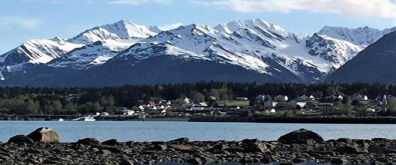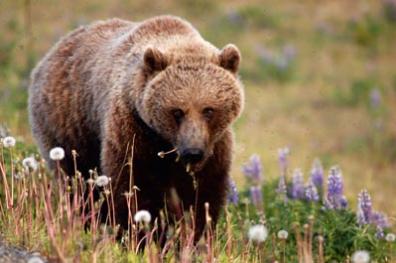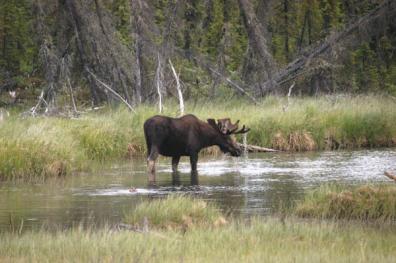About Haines
The history and culture of Haines is truly fascinating. From the Dalton Trail and Historic Fort Seward to the Presbyterian mission that founded the townsite of Haines, if you’re a history buff the past comes alive at the Sheldon Museum & Cultural Center.
The strong cultural ties of the area are also of great interest. You can see native carvers and artists at Alaska Indian Arts or head out to the village of Klukwan and visit their cultural museum. For a different experience, visit The Hammer Museum, the only one of its kind in North America. The American Bald Eagle Foundation gives you a great opportunity to learn more about these amazing raptors and a chance to meet some of their residents.
History
Haines was named in honor of Francina Haines of the Presbyterian Home Missions Board. Accompanied by his friend, John Muir, S. Hall Young, was the first missionary to the area in 1879. The purpose of their trip was to scout a location for a mission and a school.
The first known meeting between white men and Tlingit took place in 1741 when a Russian ship anchored near Haines and started the fur trade in the area. In 1892, Jack Dalton established a toll road on the Tlingit trade route into the interior to cash in on gold-seekers and others heading north into Canada. Parts of the Dalton Trail are now the Haines Highway.
In 1902, ongoing border disputes between the U.S. and Canada provided the justification for an army post in Alaska. The white buildings of Fort William H. Seward still stand and are a distinctive landmark of Haines. Decommissioned in 1947, the fort was bought by a group of war veterans with hopes of creating an arts and commerce community. The buildings are now privately owned homes, accommodations, restaurants, galleries, and shops.
Culture
The first people to call the Chilkat Valley home were Tlingit Indians. Originally called “Dei-Shu” or “End of the Trail,” Haines is home of the Chilkat Indians whose mother village is Klukwan, located 22 miles north of Haines. Klukwan is recognized as the earliest of the Chilkat villages and contains many reminders of its rich past. Now the Haines Highway into Canada, and previously the Dalton trail used by gold-seekers, the Tlingit trade route to the interior was dubbed the “grease trail’ because the most important item carried was oil extracted from the eulachon fish.
Due to the bountiful resources of the area, Tlingits could spend less time on survival and more on developing other skills. Tlingits were the first settlers in the Chilkat Valley, and their traditions still flourish today.
Landscape
The truly majestic scenery of Haines comes from the glacier terrain that formed the area many years ago. Haines is surrounded by mountains and water. Rising high above the town are the Takinsha Mountains and Chilkat Range to the south, Takshanuk Mountains to the north and Coast Mountains to the east across the Lynn Canal.
Heading northwest from Haines, you will find yourself following the Chilkat River. This river is located in an immense valley carved out long ago by a glacier. To the east is the Lynn Canal, another area that once held a glacier. The Lynn Canal, or Lynn Fjord, is one of the longest and deepest fjords in the world. The fjord measures 60 miles long and more then 2,000 feet deep.
Remnants of Haines’ glacier history can still be seen in Rainbow and Davidson Glaciers in the Chilkat Range. Although no road connects directly to these glaciers, beautiful views can be seen from Mud Bay Road through Chilkat State Park.
Haines is a breathtakingly scenic community. We are reminded of this daily when we look outside. A favorite view for many locals and visitors alike is from Picture Point off Lutak Road. Looking at this view of our community we are reminded everyday of how lucky we are to live in such a beautiful location. Enjoy all the scenery Haines has to offer.
Wildlife
Haines is known for its abundance of wildlife and can be seen practically anywhere in the valley, even in the downtown area. Guided tours are the best way to optimize your wildlife viewing potential as tour operators not only know where to go but are also able to reach remote areas not typically accessed by the main stream of people. Check out our Tours & Activities to learn more about tours that suit your taste in experiencing the outdoors for wildlife viewing.
Wildlife Viewing Resources
For a list of the more popular wildlife viewing sites in Haines, safety recommendations, and viewing tips, stop by the Visitors Center for viewing guide. You may also visit the state’s Wildlife Conservation page for wildlife viewing throughout Alaska and a Wildlife Checklist.
Nothing provides a thrill quite like seeing bears in the wild. Haines is home to both black and brown bears. Although bears can be seen virtually anywhere in the Chilkat Valley, certain areas are becoming well-known for optimal bear viewing opportunities. The Chilkoot River flows from Chilkoot Lake into Lutak Inlet and is one of the most easily reached bear viewing spots in Southeast Alaska from mid-June to October.
To minimize effects on wildlife habitat and make your bear viewing experiences safe and enjoyable for you, the bears, and all wildlife, stop by the visitor center for a Wildlife Viewing Guide and a check-list for Bear Safety. You may also visit the Alaska Fish and Game Wildlife Viewing site.
Birding
Over 260 species of birds pass through the Chilkat Valley at one time or another during the year. You can “wing it’ on your own for birding in Haines but many tours optimize bird viewing opportunities with guides knowledgeable about the many species in our area. Click on Birds of the Chilkat Valley Checklist for an on-line, printable version or stop by the Haines Visitors Center. For birding information in Haines and statewide, check out the state program Wings Over Alaska.
Gathering of Eagles
Haines is known as “The Valley of the Eagles.” Year-round resident eagles total approximately 400 but the population swells to over 3,500 in the autumn months of October through December when a late run of chum salmon in the Chilkat River provides a feast for these majestic raptors. This natural phenomenon is highlighted each November with the Alaska Bald Eagle Festival featuring guided eagle viewing, educational tours, programs, and photo workshops for all ages. The American Bald Eagle Foundation is the perfect place to learn more about our national icon along with all the other wildlife that reside in the valley.
Moose
Moose are another highlight for the wildlife viewing in the Haines area. Moose can be seen anywhere in the valley, sometimes even in downtown! Moose are the largest member of the deer family. A full-grown bull can measure 7 feet at the shoulder. Twin calves are common and triplets have even been spotted in the wild.
It’s very important to remember the Moose are wild animals and tend to be even more dangerous than bears. Moose will most likely charge if felt threatened particularly if protecting a calf. See the tips for Safety Around Moose on the Alaska Fish and Game Wildlife Conservation web page for wildlife viewing.
Fun Facts
- Haines is home to the historical US Military Base, Fort William H. Seward, over 100 years old
- Haines borders Glacier Bay National Park
- Population is 2500, 400 eagles (in fall), and 260 species of birds
- Haines goes hand in hand with arctic tundra and temperate rain forest
- Best kept secret in Haines is the large number of artists producing art recognized around the world
- Haines borders 20 million acres of federal protected wilderness, the world’s largest protected land mass around two national forests (Tongass and Chugach)
- Haines and Skagway are 14 miles apart by water, or 350 miles by road (also known as the Golden Circle Route)
- The Disney movie White Fang was filmed entirely in Haines in 1991
- Tlingits were the first settlers to the area and called Haines “Dei-shu” meaning “The End of the Trail”. The area is still rich with Tlingit culture and history
- The Dalton Trail, also known as the Tlingit “grease trail”, came through Haines and was not only one of the first routes to the gold rush but also a toll road
- Both the Big Nugget Mine and Porcupine Mine, featured in Discovery Channel’s “Gold Rush” show, are located in Haines
Day Trips
If you only have a day to spend in Haines, there are plenty of ways to make it a memorable one!
Sightseeing & Wildlife
There really is something for everyone in the great outdoors in the Chilkat Valley! Epic scenery, pleasant climate and magnificent wildlife make the land a remarkable place to explore.





